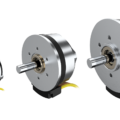~ Start with motors: Five energy saving tips for industry ~
According to Ofgem, we’ve witnessed a record rise in global gas prices over the past six months, with wholesale prices more than quadrupling in the last year. Facing soaring energy bills and rising costs many, industrial businesses are struggling. To combat this, plant managers are looking for ways to streamline their operations and identify areas to improve efficiency. Here, Marek Lukaszczyk European and Middle East marketing manager at motor and drive manufacturer, WEG, explains five ways to improve motor energy efficiency — a key strategy for improving overall plant efficiency.
Electric motors are the foundation of manufacturing, but they are also among the most energy-intensive pieces of equipment. Europe has over 8 billion electric motors in use, consuming approximately 63 per cent of the electricity generated across the continent.
Efficiency is especially important in today’s climate, not only to reduce carbon emissions but also for reducing energy consumption and the cost of the motor over its lifecycle. Thankfully, changes in a plant do not have to be huge to reap savings. Many of these changes will work with your existing footprint and equipment. Here are our top five tips:
Straightforward motor upgrades
Many electric motors in use are either low efficiency or not properly sized for the application. Both issues result in motors working harder than they need to, using more energy in the process. Similarly, older motors may have been rewound a few times during maintenance, lessening their efficiency. In fact, it is estimated a motor loses one to two percent efficiency every time it is rewound.
Because energy consumption accounts for 96 per cent of the total life cycle cost of a motor, paying extra for a premium efficiency motor will result in return on investment over its lifespan.
But if the motor is working, and has been working for decades, is it worth the hassle of upgrading it? With the right motor supplier, the upgrade process isn’t disruptive. A pre-defined schedule ensures the motor exchange is carried out quickly and with minimal downtime. Opting for industry standard footprints helps to streamline this process, as factory layout will not need altering.
Obviously, if you have hundreds of motors in your facility, it’s not feasible to replace them in one go. Target the motors that have been subjected to rewinds first and plan a schedule of replacements over two to three years to avoid significant downtime.
Updated European regulations for ecodesign came into effect in July 2021, setting out new energy efficiency standards for motors and drives. The second stage of the legislation changes is set to commence on July 1, 2023 and will further expand the scope of the regulatory changes.
In 2023, motors new to the European market with a rated output between 75kW and 200kW will be required to achieve IE4. Single-phase motors with 0.12 kW power output and above will also be required to meet IE2 levels as a minimum under the new legislation.
By upgrading their motors and drives now, motor buyers can not only make their operation more sustainable ahead of the regulatory changes, but also reap the long-term financial benefits of the increased efficiency. Energy makes up a significant portion of the total cost of a motor throughout its lifecycle, so investing in a more efficient motor or drive now is a more cost-effective option.
Motor performance sensors
To keep motors running optimally, plant managers can install retrofit sensors. With important metrics such as vibration and temperature monitored in real-time, built-in predictive maintenance analytics will identify future problems ahead of failure.
With sensor-based applications, such as WEG Motion Fleet Management (MFM) — a control and monitoring tool for the operation and maintenance of industrial assets —
motor data is extracted and sent to a smartphone or tablet. Deployable across fleets of motors, drives, gearboxes and other installed equipment, MFM promises to reduce unscheduled downtime, optimise maintenance, and improve efficiency in large industrial operations. Through periodic data collection, MFM generates valuable insights to inform maintenance teams on the actual state of plant assets.
Over in Brazil, one manufacturing plant implemented this technology on motors driving four identical air recirculating machines. When the maintenance team received an alert that one had higher vibration levels than the acceptable threshold, their heightened vigilance enabled them to solve the problem. Without this insight, unexpected factory shutdown could have arisen.
But where are the energy savings in the aforementioned scenario? Firstly, increased vibration is increased energy usage. Solid integrated feet on a motor and good mechanical stiffness is crucial to guarantee less vibration. By resolving the non-optimal performance rapidly, this wasted energy was kept to a minimum.
Secondly, by preventing a full factory shut down, the higher energy requirements to restart all machines was not required.
Install soft starters
For machines and motors that do not run continuously, plant managers should install soft starters. These devices temporarily reduce the load and torque in the power train and the electric current surge of the motor during start-up.
Think of this as being at a red traffic light. While you could slam your foot down on the gas pedal when the light turns green, you know this is an inefficient and mechanically stressful way to drive — as well as dangerous.
Similarly, for machine equipment, a slower start uses less energy and results in less mechanical stress on the motor and shaft. Over the lifespan of the motor, a soft starter provides cost savings attributed to reduced energy costs. Some soft starters also have built in automatic energy optimising. Ideal for compressor applications, the soft starter judges the load requirements and adjusts accordingly to keep energy expenditure to a minimum.
Use a variable speed drive (VSD)
Sometimes referred to as a variable frequency drive (VFD) or inverter drive, VSDs adjust the speed of an electric motor, based on the application requirements. Without this control, the system simply brakes when less force is required, expelling the wasted energy as heat. In a fan application for instance, VSDs reduce the airflow as per requirements, rather than simply cutting off the airflow while remaining at maximum capacity.
Combine a VSD with a super-premium efficiency motor and the reduced energy costs will speak for themselves. In cooling tower applications for example, using a W22 IE4 super premium motor with a CFW701 HVAC VSD, when properly sized, provides an energy cost reduction of up to 80 percent and average water savings of 22 per cent.
Make full use of VSDs
Installing a VSD is one thing, using it to its full potential is another. Many VSDs are packed with useful features that plant managers don’t know exist. Pump applications are a good example. Fluid handling can be turbulent, between leakages and low fluid levels, there’s a lot that can go wrong. Built-in control, such as Pump Genius in WEG VSDs, enables more effective use of motors based on production demands and fluid availability.
Automatic broken pipe detection in the VSD can identify fluid leakage zones and adjusts motor performance accordingly. Additionally, dry pump detection means if fluid runs out, the motor is automatically deactivated and a dry pump alert is issued. In both cases, the motor reduces its energy consumption when less energy is required to handle available resources.
If using multiple motors in the pump application, jockey pump control can also optimise the use of different sized motors. It may be that demand requires just a small motor to be in use, or a combination of a small and large motor. Pump Genius gives increased flexibility to use the optimal sized motor for a given flow rate.
VSDs can even perform automatic cleaning of the motor impeller, to ensure deragging is carried out consistently. This keeps the motor in optimal condition which has positive effects on energy efficiency.
While it isn’t possible to reap the benefits that come from implementing these changes overnight, by putting a strategic plan in place industrial businesses will be able to target their most inefficient pain points. This will result in significant energy efficiency benefits – a welcome change to help combat the soaring energy prices.
For more information on WEG and its ranges of motors and VSDs, visit weg.net.








